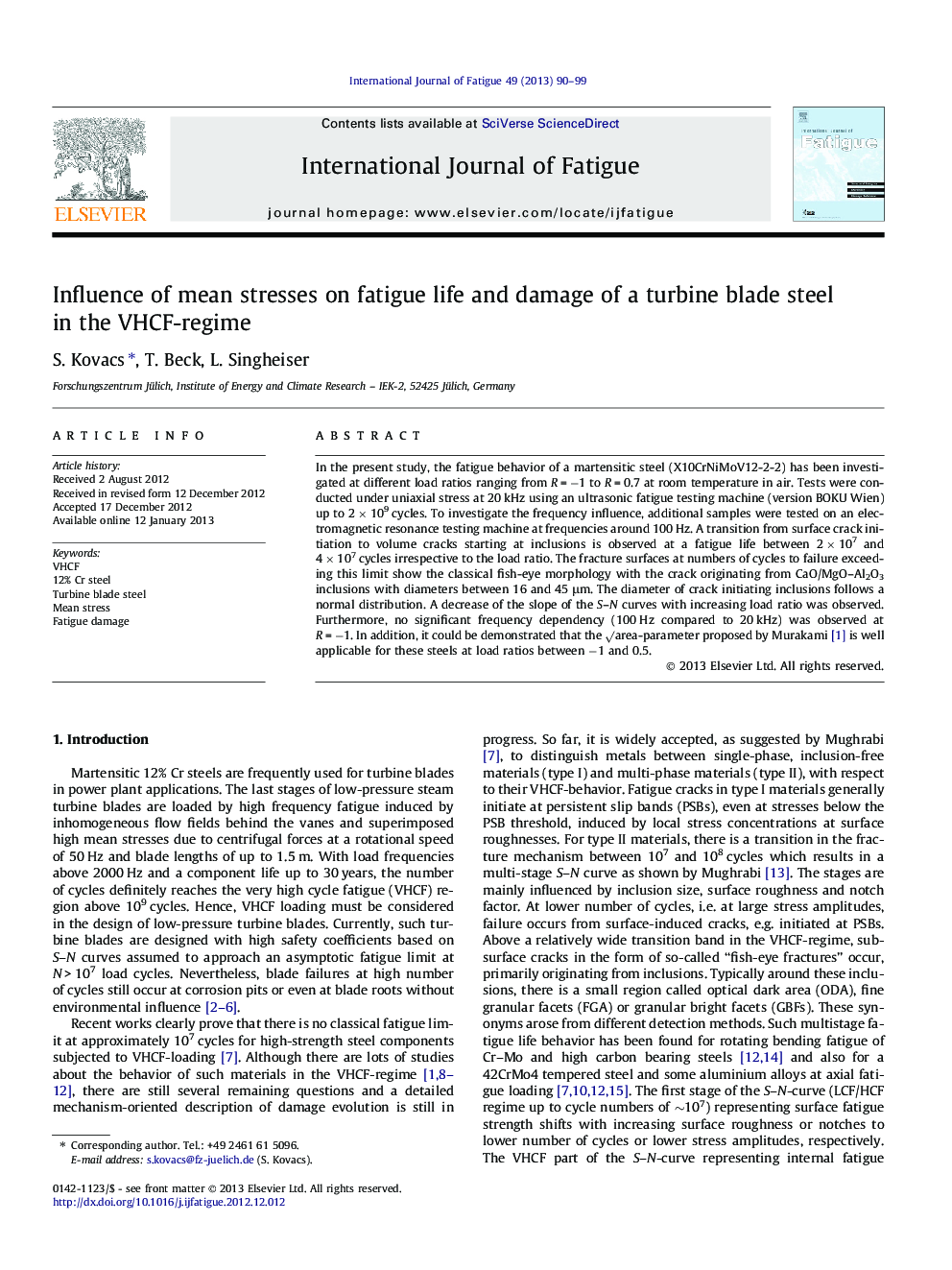| Article ID | Journal | Published Year | Pages | File Type |
|---|---|---|---|---|
| 777723 | International Journal of Fatigue | 2013 | 10 Pages |
In the present study, the fatigue behavior of a martensitic steel (X10CrNiMoV12-2-2) has been investigated at different load ratios ranging from R = −1 to R = 0.7 at room temperature in air. Tests were conducted under uniaxial stress at 20 kHz using an ultrasonic fatigue testing machine (version BOKU Wien) up to 2 × 109 cycles. To investigate the frequency influence, additional samples were tested on an electromagnetic resonance testing machine at frequencies around 100 Hz. A transition from surface crack initiation to volume cracks starting at inclusions is observed at a fatigue life between 2 × 107 and 4 × 107 cycles irrespective to the load ratio. The fracture surfaces at numbers of cycles to failure exceeding this limit show the classical fish-eye morphology with the crack originating from CaO/MgO–Al2O3 inclusions with diameters between 16 and 45 μm. The diameter of crack initiating inclusions follows a normal distribution. A decrease of the slope of the S–N curves with increasing load ratio was observed. Furthermore, no significant frequency dependency (100 Hz compared to 20 kHz) was observed at R = −1. In addition, it could be demonstrated that the √area-parameter proposed by Murakami [1] is well applicable for these steels at load ratios between −1 and 0.5.
► Ultrasonic VHCF-tests were conducted on a 12% Cr steel under uniaxial load. ► A consistent transition from surface to subsurface cracks was found for −1 < R < 0.7. ► The √area-concept is well applicable for load ratios between −1 and 0.5. ► Applying the √area-concept significantly reduces the scatter of the S–N curve. ► ODAs were observed only for VHCF-specimen fatigued without mean stress.
